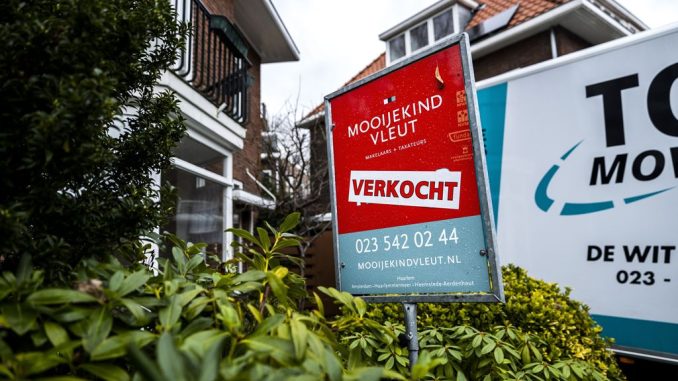
A Successful Measure
The purchase ban for investors seems to offer solace for first-time buyers on the housing market. Some 2,000 homes that would have fallen into the hands of investors without the ban went to first-time buyers last year, researchers conclude.
The researchers from the University of Amsterdam (UvA), Erasmus University Rotterdam, and the Land Registry looked at the effects of the purchase ban. According to the measure, a home may not be rented out in the first four years after purchase. For example, investors who buy homes for rent are banned.
Well Done
Dozens of municipalities use the measure, including the largest cities of Amsterdam, Rotterdam, Utrecht, and The Hague. According to the study, the purchase ban has succeeded in giving first-time buyers a better chance on the housing market.
Researcher Marc Francke of the UvA thinks that the number of homes available to first-time buyers will increase even further as a result of the purchase ban. “The measure applies from January 1, 2022, but some municipalities only introduced it at the end of last year.”
Keeping investors out of certain neighborhoods does not lead to them buying more homes elsewhere. So, say the researchers, there is no waterbed effect.
Other Causes
There are other reasons for the declining interest of investors in renting out homes. For example, the transfer tax went up. And the points system is changing, as a result of which landlords are further restricted in determining the rent.
It all leads to landlords wanting to sell their properties. This is favorable for buyers, but the downside is that there are fewer rental properties available.
According to the study, this limitation affects, among other things, migrant workers. In terms of income, many of this group would qualify for social housing. But the waiting lists for this are long, migrants often have not built up enough ‘waiting time’ and are therefore at the bottom of the list.
“For migrant workers, the flush is getting thinner,” says researcher Francke, professor of Real Estate Analytics at the UvA. “There are fewer homes left for them.” The composition of the neighborhood is also changing due to the purchase ban. “Fewer non-Dutch people, the average income of residents is going up a bit, as is the average age.”
The researchers also see that in a neighborhood where the purchase ban applies, the rental price of the remaining rental homes rises slightly.

Be the first to comment